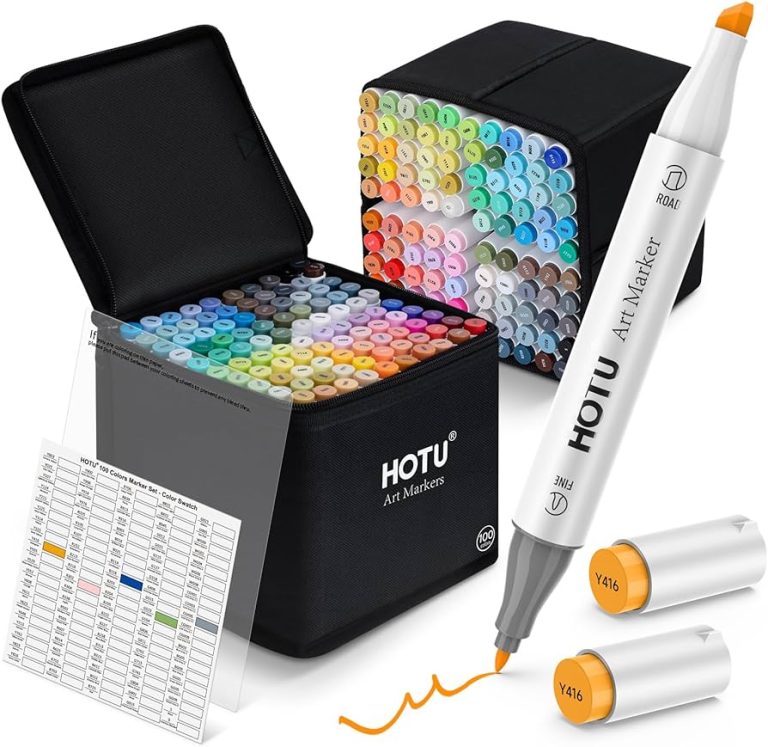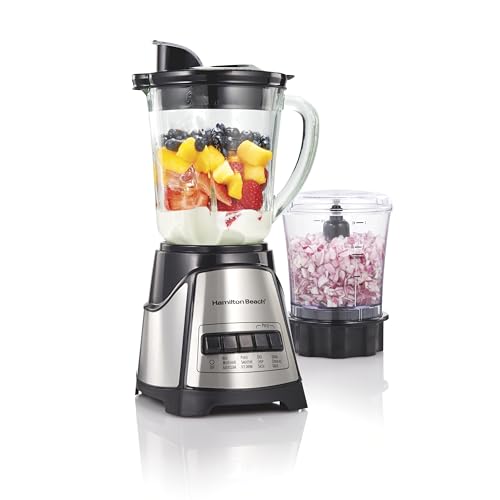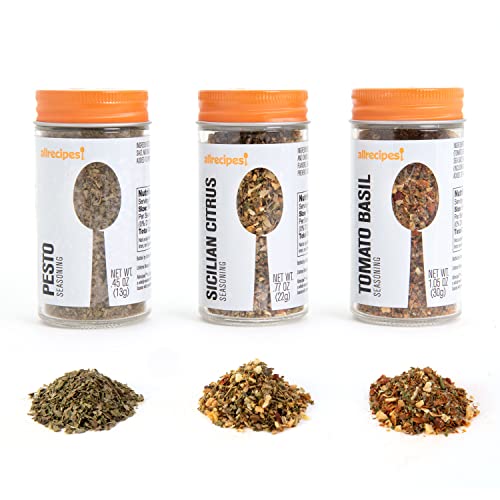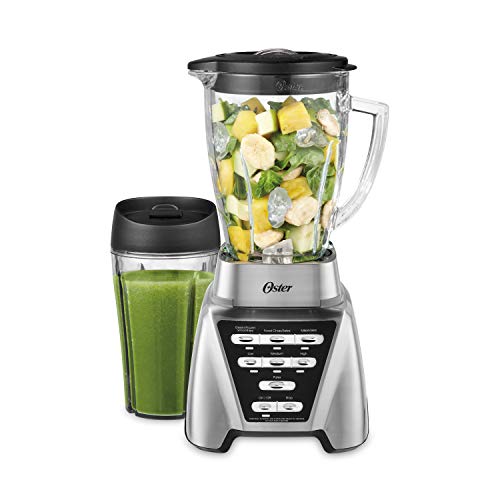Blender Vs Food Chopper Vs Food Processor: Unleash Your Culinary Power!
Blender, Food Chopper, and Food Processor are kitchen appliances used for different purposes.

Credit: www.walmart.com
The Basics
Choosing the right kitchen appliance can be daunting, so here’s a quick comparison. A food processor is great for handling heavy-duty tasks, while a blender is best for liquids and smoothies. On the other hand, a food chopper is ideal for small tasks and chopping nuts or vegetables.
Blender
A blender is a versatile kitchen appliance that can perform various tasks such as blending, pureeing, and crushing ice. It consists of a motorized base and a container with a sharp blade at the bottom. The blade rapidly spins to process the ingredients into a smooth consistency.
Blenders are perfect for making smoothies, milkshakes, soups, and sauces. They are ideal for creating liquids or semi-liquids with a smooth texture. Blenders are also great for incorporating air into mixtures, which is why they are commonly used for making whipped cream or frothy beverages.
Blenders are compact and easy to use. They come in different sizes and capacities, allowing you to choose the one that suits your needs. Whether you want a personal blender for single servings or a larger one for family meals, there’s a blender that fits your requirements.
Food Chopper
A food chopper is designed specifically for chopping, mincing, or dicing ingredients. It typically has a small motorized base with a removable container and a sharp blade inside. When activated, the blade rotates in a circular motion to cut the food into small pieces.
Food choppers are perfect for tasks like chopping onions, garlic, herbs, or nuts. They offer convenience and speed, allowing you to quickly prepare ingredients for your recipes. Food choppers also have a compact size, making them ideal for small kitchens or for those who prefer minimalistic appliances.
With a food chopper, you can easily achieve consistent and uniform chopping results. They are easy to assemble, use, and clean. Some food choppers come with additional attachments for tasks like emulsifying or kneading dough, adding versatility to your kitchen arsenal.
Food Processor
A food processor is a powerful kitchen appliance that can perform a wide range of tasks. It consists of a motorized base, a large bowl with various interchangeable blades and attachments, and a lid. The blades and attachments are designed for different purposes, such as slicing, shredding, grating, kneading, and pureeing.
Food processors can handle more significant food quantities due to their larger capacity, making them suitable for meal prep or cooking for a large group. They are perfect for tasks like slicing vegetables, making dough, grating cheese, or pureeing ingredients for sauces or dips.
Unlike blenders or food choppers, food processors offer more versatility in terms of the types of tasks they can perform. They allow you to switch between different blades and attachments depending on your needs, providing a wide range of kitchen possibilities.
Functionality
When it comes to kitchen appliances, blenders, food choppers, and food processors are essential tools that make food preparation easier and more efficient. While each appliance serves a similar purpose, they differ in terms of functionality, offering unique features and capabilities that cater to different cooking needs. In this article, we’ll explore the functionality of blenders, food choppers, and food processors, highlighting their distinct features and functions. So, let’s dive in and discover which appliance suits your needs best.
Blender Features
A blender is a versatile kitchen appliance that excels at preparing smoothies, milkshakes, soups, and sauces. Its powerful motor and sharp blades enable it to blend or liquefy ingredients, creating smooth and consistent textures. The primary features of a blender include:
- High-speed motor for efficient blending
- Sharp, durable blades for crushing ice and blending tough ingredients
- Multiple speed settings for precise control over blending consistency
- Jar with a spout for convenient pouring
Food Chopper Capabilities
A food chopper is designed to chop, dice, and mince ingredients quickly and efficiently. It is commonly used for chopping vegetables, nuts, herbs, and more. The main capabilities of a food chopper include:
- Sharp blades that rotate and chop ingredients with ease
- Speed settings for customized chopping results
- Compact size, ideal for small quantities of food
- Easy assembly and disassembly for hassle-free cleaning
Food Processor Functions
A food processor is a versatile kitchen appliance that performs various tasks, including slicing, shredding, pureeing, and kneading dough. It comes with interchangeable blades and attachments, providing a range of functions. The key functions of a food processor include:
- Interchangeable blades for slicing, shredding, and chopping
- Dough blade for kneading bread and pizza dough
- Large capacity bowl for handling greater quantities of food
- Powerful motor for efficient food processing
In conclusion, blenders, food choppers, and food processors each offer their unique functionality, making them indispensable tools in the kitchen. Blenders excel at creating smooth textures, food choppers specialize in chopping and dicing, while food processors provide a range of functions for versatile food preparation. Assessing your specific cooking needs will help you determine which appliance is best suited for you.
Ideal Uses
When it comes to kitchen appliances, choosing the right tool for the job can make a significant difference in your cooking experience. Each appliance—blender, food chopper, and food processor—has its own ideal uses, making it essential to understand the distinct functions of each in order to maximize their utility in the kitchen.
Blender Applications
The blender is perfect for creating smoothies, milkshakes, purees, and soups. Its powerful motor and sharp blades are designed to liquefy and blend ingredients, making it ideal for creating liquid-based recipes.
Food Chopper Utilization
A food chopper is best utilized for chopping, dicing, and mincing ingredients such as vegetables, nuts, and herbs. With its sharp blades and compact size, it is perfect for quickly processing small quantities of food without the need to liquefy them.
Food Processor Best For
The food processor excels at tasks that require more power and precision, such as kneading dough, shredding cheese, slicing vegetables, and making nut butters. Its various attachments and adjustable settings make it suitable for a wide range of food preparation tasks.

Credit: www.homedepot.com
Key Differences
Blenders, food choppers, and food processors each have their own unique features. While blenders are great for liquids and making smoothies, food choppers excel at chopping vegetables and nuts, and food processors are versatile for a range of tasks including mixing and pureeing.
When it comes to kitchen appliances, having the right tools can make a huge difference in your cooking experience. Two popular options for chopping, blending, and processing food are blenders, food choppers, and food processors. While they may seem similar in functionality, these appliances have some key differences that can greatly impact their performance in the kitchen.Blender Vs. Food Chopper
A blender and a food chopper may look similar, but they serve different purposes in the kitchen. Let’s see how they differ:Blender
A blender is a versatile kitchen appliance that is mainly used to mix, blend, and puree ingredients. It consists of a motor base, a glass or plastic jar, and a lid with rotating blades. Blenders are ideal for creating smoothies, soups, sauces, and other liquid-based recipes. Here are some key features of blenders:- Blenders are designed to handle liquids, making them perfect for creating smooth and creamy textures.
- They usually come with multiple speed settings and powerful motors that can blend even the toughest ingredients.
- Blenders often have larger capacities, allowing you to make larger batches of recipes.
Food Chopper
Unlike blenders, food choppers are specifically designed for chopping and mincing ingredients. They consist of a small motor base with a bowl and a set of sharp blades. Food choppers offer precise control over the texture of your ingredients and are great for preparing salads, salsas, and chopping vegetables. Here are some key features of food choppers:- Food choppers have smaller capacities compared to blenders, making them perfect for small chopping tasks.
- They usually come with a pulse function, allowing you to control the chopping process and avoid over-processing your ingredients.
- Food choppers are compact and easy to store, taking up less space in your kitchen.
Blender Vs. Food Processor
While blenders and food processors may seem similar, they have distinct differences that can impact their performance in the kitchen. Let’s dive into the details:Blender
As mentioned earlier, blenders are primarily designed for blending and pureeing ingredients. However, they do have some additional features that differentiate them from food processors:- Blenders are equipped with a variety of blade options, such as ice-crushing blades or pulverizing blades, allowing you to achieve different textures.
- They are great for creating creamy soups, smoothies, and frozen drinks.
- Blenders can handle large amounts of liquid, making them suitable for recipes that require a liquid base.
Food Processor
Food processors are designed to handle a wide range of food preparation tasks, including chopping, grinding, shredding, and mixing. They come with various attachments and features that make them versatile in the kitchen. Here are some key features of food processors:- Food processors have interchangeable blades and discs, allowing you to perform different tasks with ease.
- They are perfect for chopping vegetables, making dough, shredding cheese, and even creating nut butter.
- Food processors have larger capacities compared to blenders and food choppers, making them suitable for handling large volumes of food.
Making The Right Choice
When it comes to equipping your kitchen with the right appliances, it’s essential to choose wisely. Three popular options to consider are the blender, food chopper, and food processor. Each of these appliances offers unique features that can make meal preparation a breeze. However, in order to make the right choice for your needs, there are a few considerations to keep in mind.
Considerations For Choosing
Before deciding on which appliance to purchase, it’s important to consider a few key factors:
- Functionality: Assess your cooking needs and determine which functions are most important to you. Are you looking for an appliance primarily for blending smoothies and soups, chopping vegetables, or processing foods for more complex recipes?
- Capacity: Think about the quantity of food you typically cook. If you often cook in large batches or have a big family, a higher capacity appliance may be more suitable.
- Space: Consider the available space in your kitchen. If you have limited counter space, you’ll want to opt for a compact and space-saving option.
- Ease of use and cleaning: Look for appliances that are user-friendly and easy to clean. Sifting through complicated instructions or spending excessive time on cleaning can become frustrating and time-consuming.
- Price: Set a budget and consider the value you’re getting for your money. While it’s important to find a reasonably priced appliance, also ensure that it meets your cooking requirements.
Choosing Based On Cooking Style
Your cooking style may heavily influence the type of appliance that suits you best. Here are some key points to keep in mind:
| Blender | Food Chopper | Food Processor |
|---|---|---|
| Perfect for making smoothies, soups, and sauces | Ideal for quickly chopping small quantities of vegetables, nuts, or herbs | Excellent for handling larger quantities and more complex tasks like kneading dough or shredding cheese |
| Great for those focused on healthy drinks and simple recipes | Suitable for individuals who frequently use chopped ingredients in their cooking | Preferred by avid cooks or those who enjoy experimenting with different recipes and techniques |
Getting The Best Value
While cost is certainly a factor to consider, it’s important to focus on value rather than just the price tag. Look for appliances that offer good warranties, durable construction, and reliable performance. Reading customer reviews and researching different brands can help you find the best value for your money.
By taking into account your cooking needs, available space, and budget, you can confidently make the right choice between the blender, food chopper, and food processor. Remember, the appliance that perfectly aligns with your requirements will simplify your cooking process and elevate your culinary creations to new heights.

Credit: www.amazon.com
Frequently Asked Questions For Blender Vs Food Chopper Vs Food Processor
What Is The Difference Between A Blender, Food Chopper, And Food Processor?
A blender is perfect for mixing liquids and making smoothies, while a food chopper is ideal for chopping vegetables and nuts. A food processor, on the other hand, can perform a wide range of tasks, including blending, chopping, shredding, and even kneading dough.
Can A Blender Be Used As A Food Chopper?
Although blenders are not specifically designed for chopping, they can still chop small quantities of soft ingredients. However, for larger chopping tasks or harder ingredients, it is recommended to use a dedicated food chopper or food processor.
What Can A Food Processor Do That A Blender Cannot?
Unlike blenders, food processors are equipped with multiple attachments and blades that allow them to perform a variety of tasks. They can chop, slice, shred, puree, knead dough, and even grind nuts and spices. This versatility makes them suitable for a wide range of recipes.
Which Is Better For Making Smoothies, A Blender Or A Food Processor?
When it comes to making smoothies, blenders are the best choice. Their powerful motor and high-speed blades can effortlessly blend fruits and vegetables into smooth and creamy mixtures. Food processors, although versatile, are not as effective in achieving the same smooth consistency.
Conclusion
In considering the pros and cons of blenders, food choppers, and food processors, it’s evident that each appliance has its own unique strengths. Your specific cooking needs and preferences will ultimately dictate which one is the best choice for you.
Whether you prioritize speed, versatility, or simplicity, there is a kitchen appliance perfect for your needs. Happy cooking!





